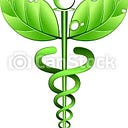HOW THE SMOOTH MUSCLE CONTRACTS?
To realize contraction, the smooth muscle needs calcium. For this reason, it has to import these ions from outside.
1-Definition.
Smooth muscles are involuntary muscles. They are in the GIT (except at the beginning and at the end), urinary bladder, uterus, etc.
2-Smooth Muscle Structure.
Some particularities are cited below:
— No t-tubule in sarcolema.
— The sarcoplasmic reticulum or (the longitudinal tubule) briefly called LG is poor developed because it not a real reservoir for calcium ions.
— Lack of tropomyosin.
— Lack of troponin-C: it is replaced by a protein called calmodulin.
— Lack of Z-lines: they are replaced by dense bodies to connect with actin.
— Very poor of mitochondrias.
3-Mechanism Of Contraction.
To realize contraction, the smooth muscle needs calcium.For this reason it has to import these ions from outside.
— Then first things, the calcium ions flow from extracellular fluid into the intracellular fluid, through voltage gated channels, thanks to the action potential.
— The smooth muscle has poor reservoir of mitochondrias, then the L-type are suitable for our type of muscle.
— Calcium ions connect to calmodulin.
— The myosin in this smooth has an ADP and enzyme myosin light chain kinase, called simply MLCK.
— Around the MLCK exist phosphate molecule. It grabs the phosphate molecule and binding it to ADP. This mechanism of transport is called Phosphorylation.
— The result of adding phosphate to ADP is ATP.
— The myosin in our muscle is mobile, but actin is motionless. Then, after breaking ATP with ATPase enzyme, the myosin wraps around actin. The enveloped actin looks as a corkscrew, biologists called it corkscrew appearance.
— Now this wrapping is fully completed, that is meaning a contraction will follow.
*Remember, the calcium channel is two: a long-lasting channel called briefly L-type and a transient channel called T-type.
